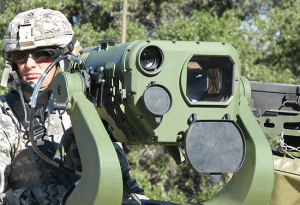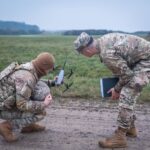
MCKINNEY, Texas - From several miles away, the water level inside a concrete water tower is clearly visible through the lenses of Raytheon’s [RTN] prototype next-generation thermal imaging camera.More important to the intended customer, as five miles, the 3rd generation forward looking infrared technology can zoom in and produce images clear enough to determine the make and model of a moving vehicle.Raytheon officials demonstrated those capabilities with a long range scout surveillance system (eLRAS3) during a visit to its production…

 By
By 











